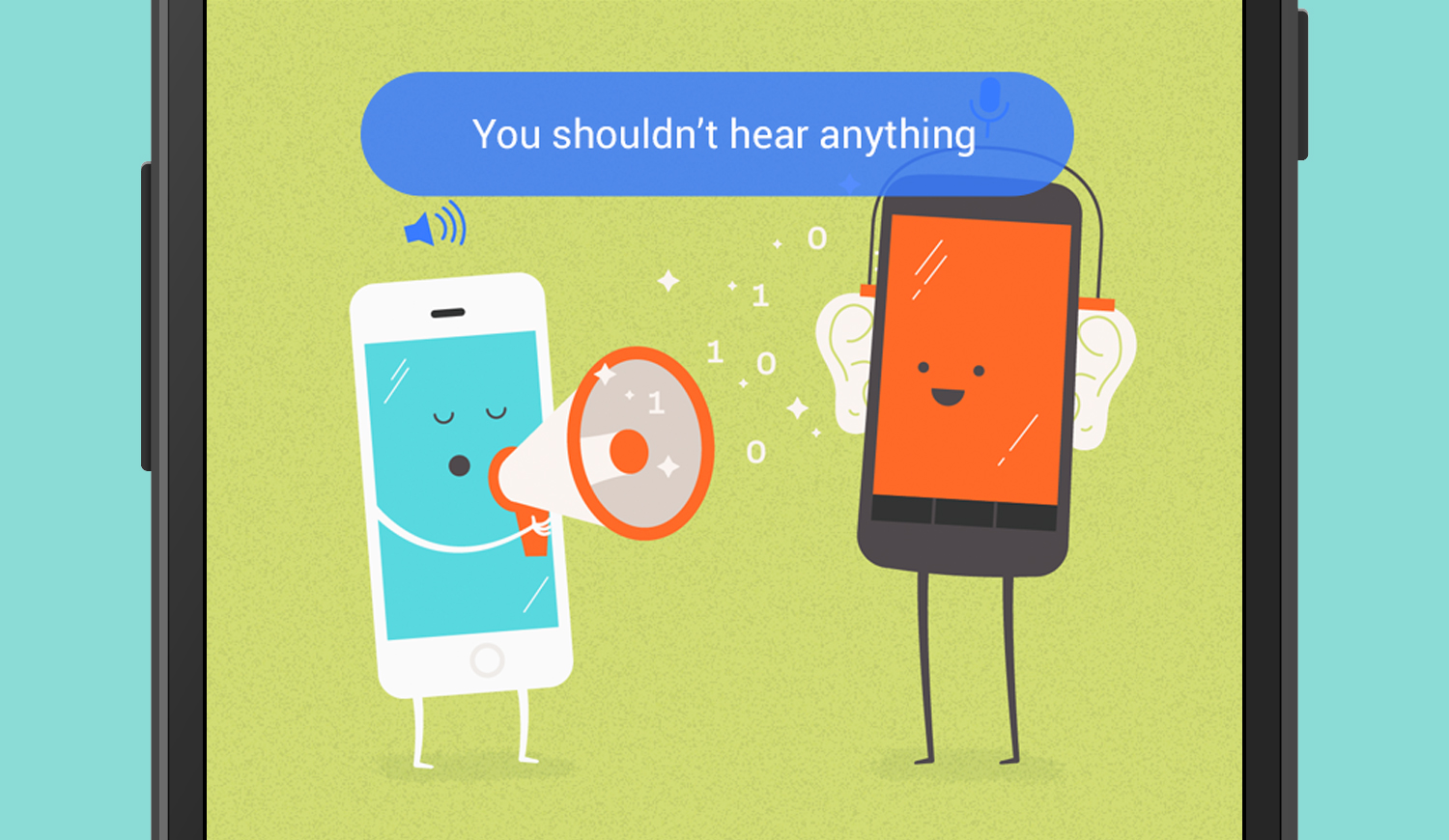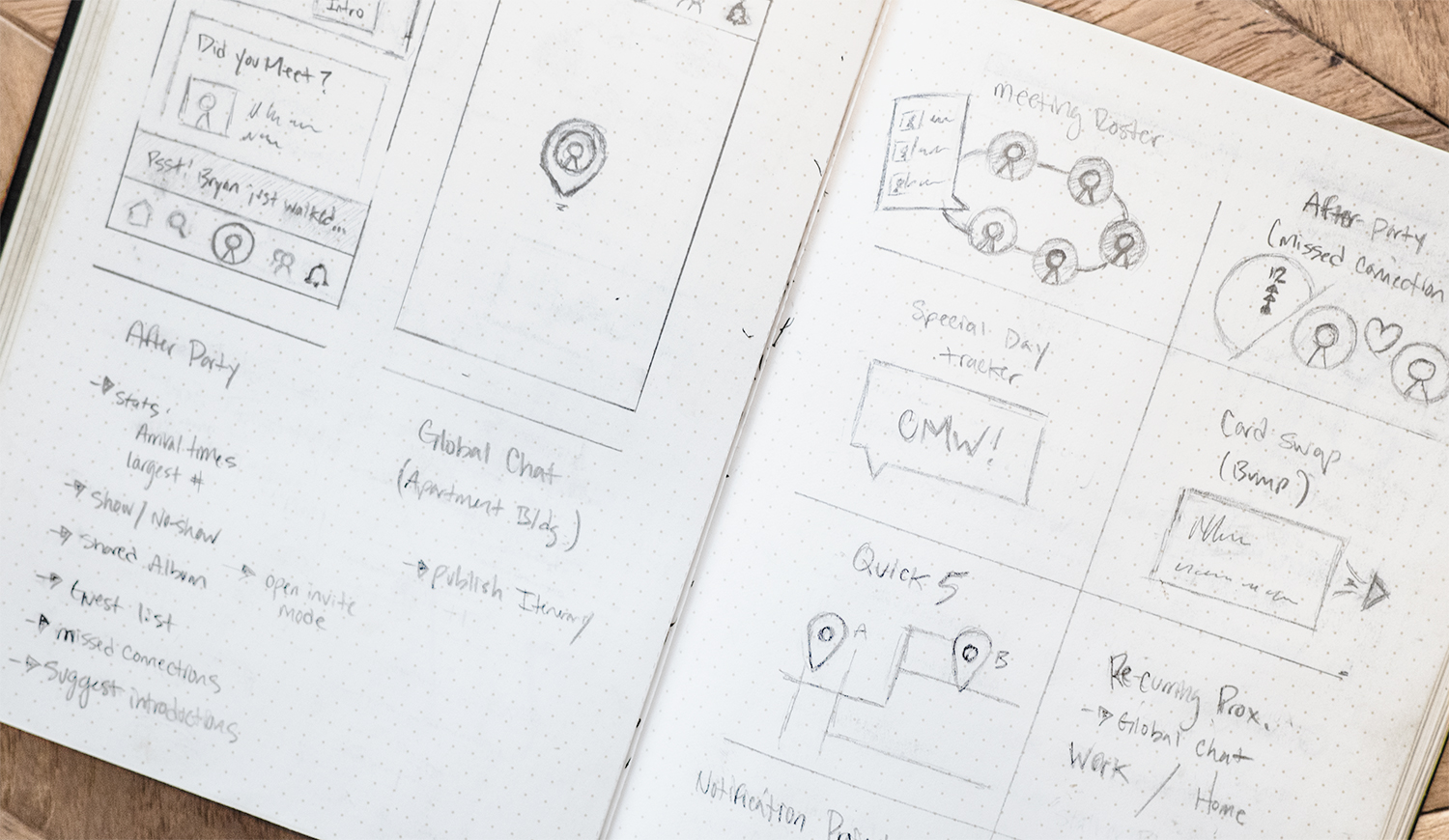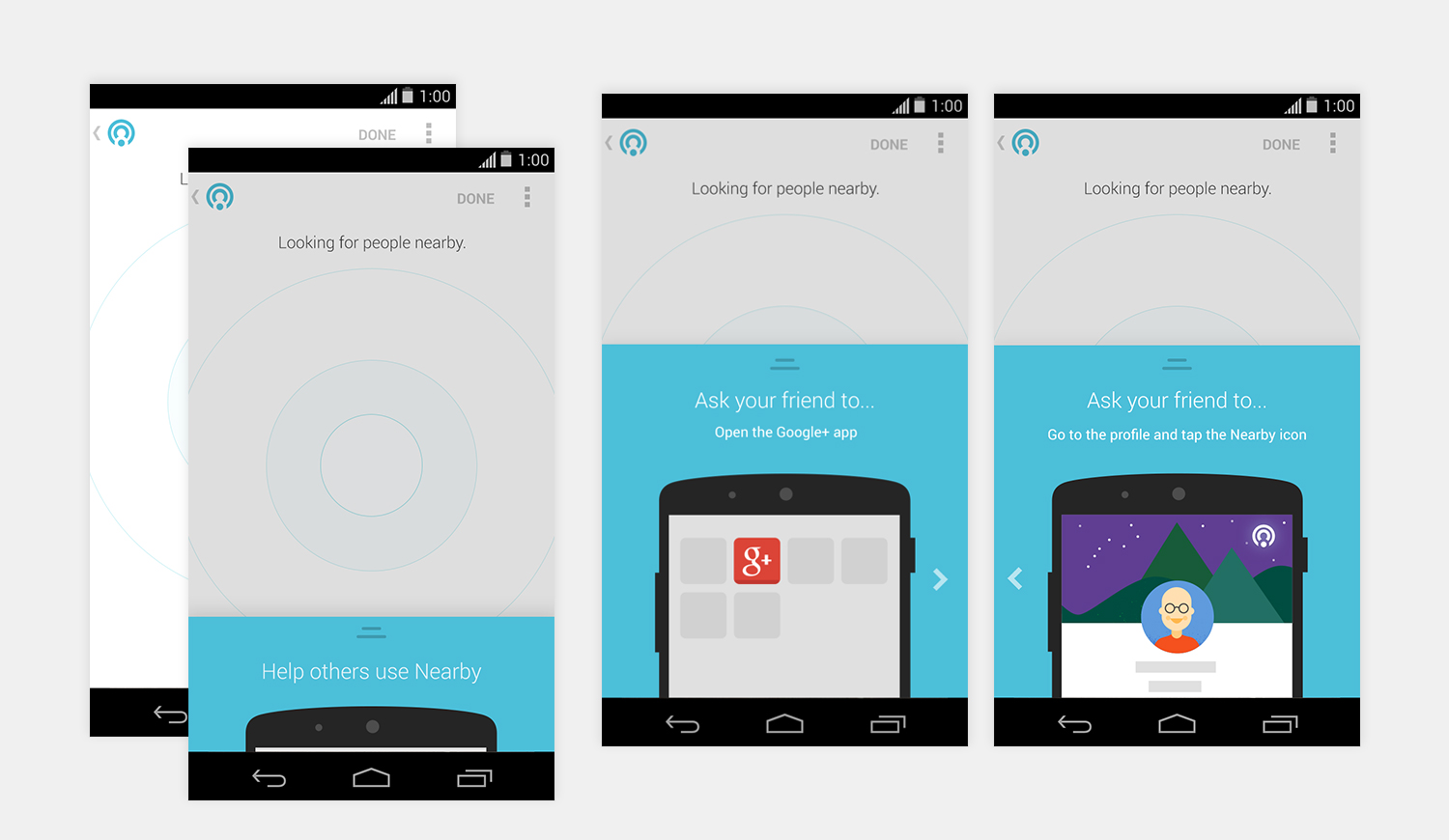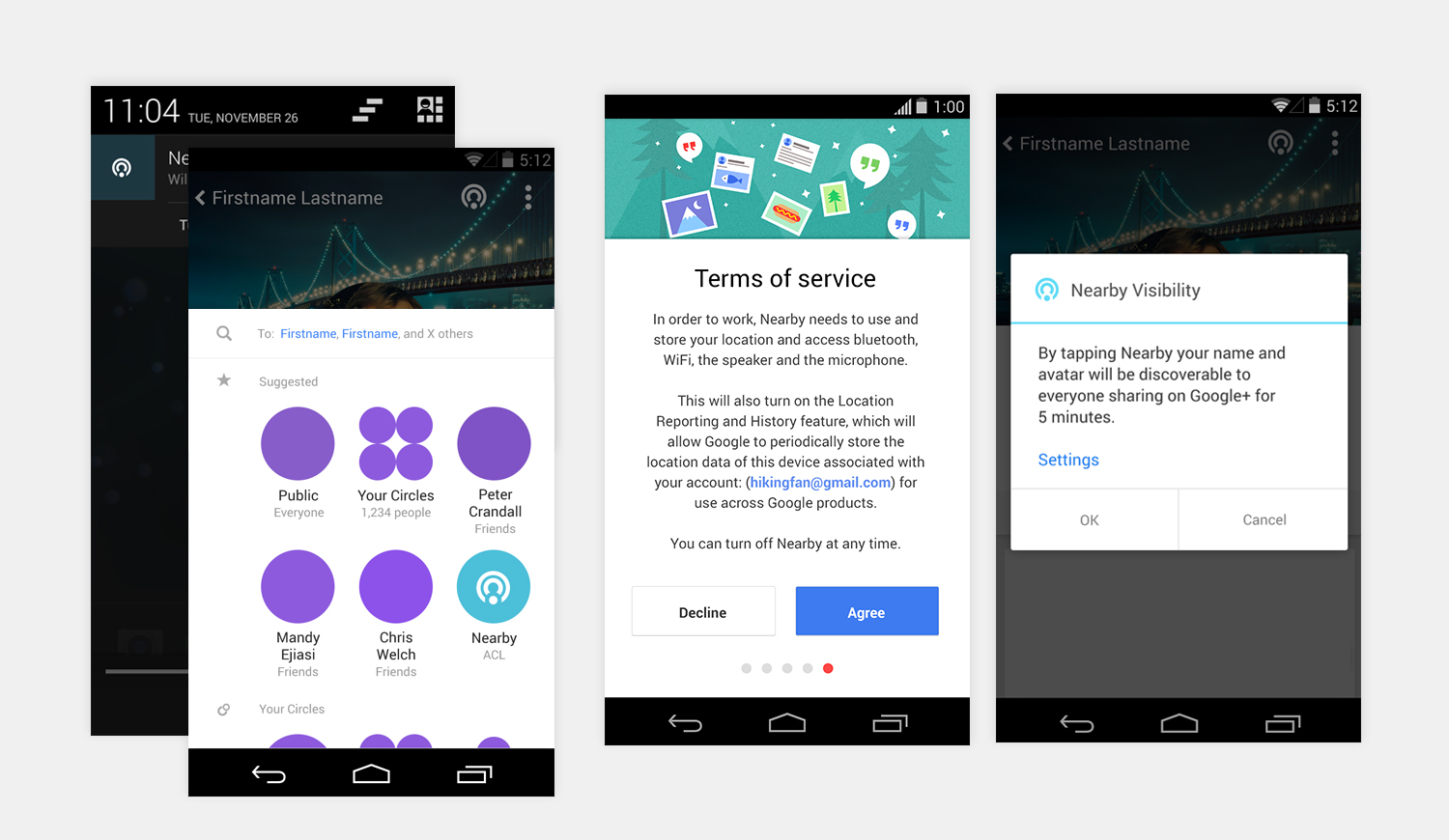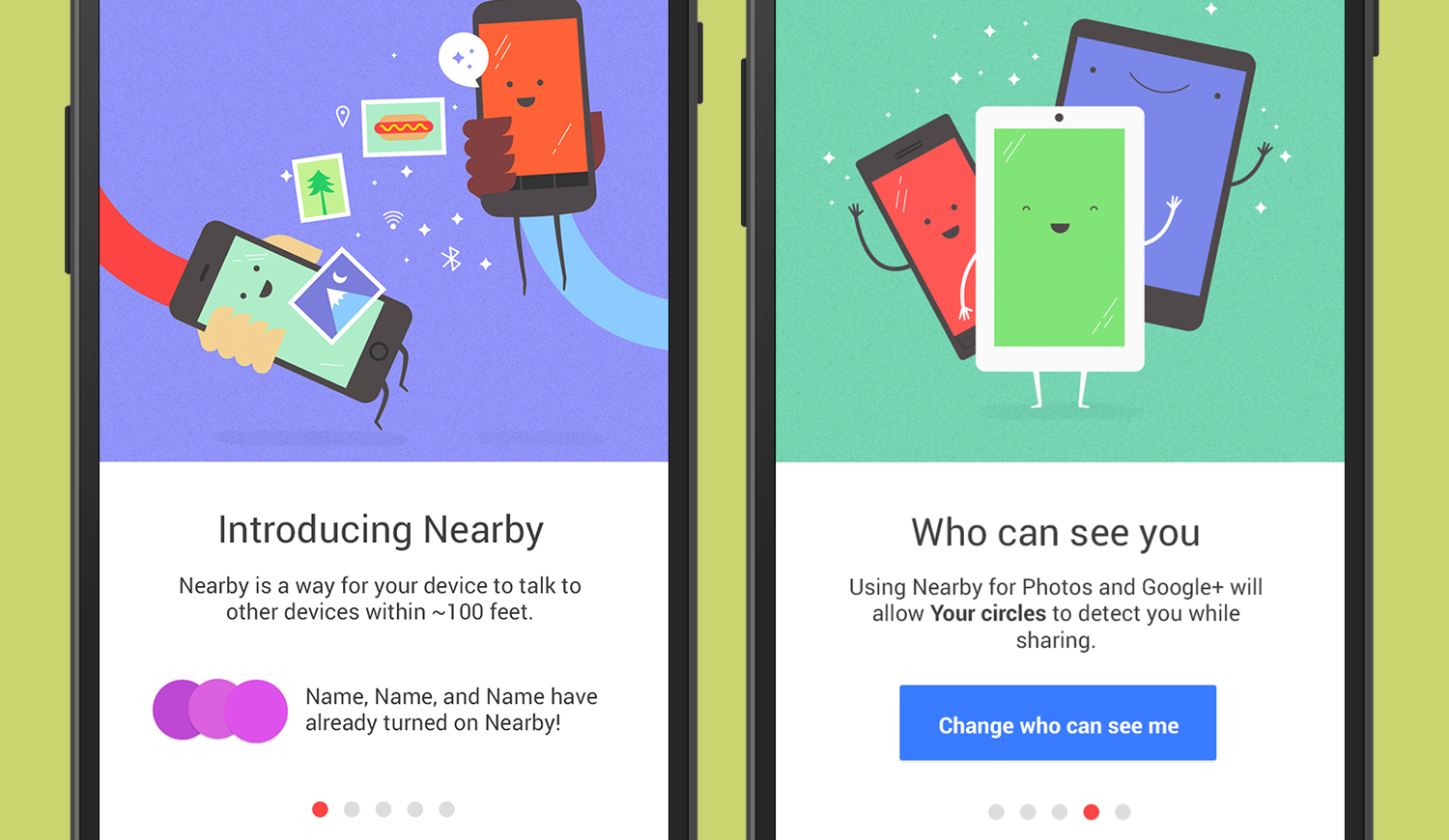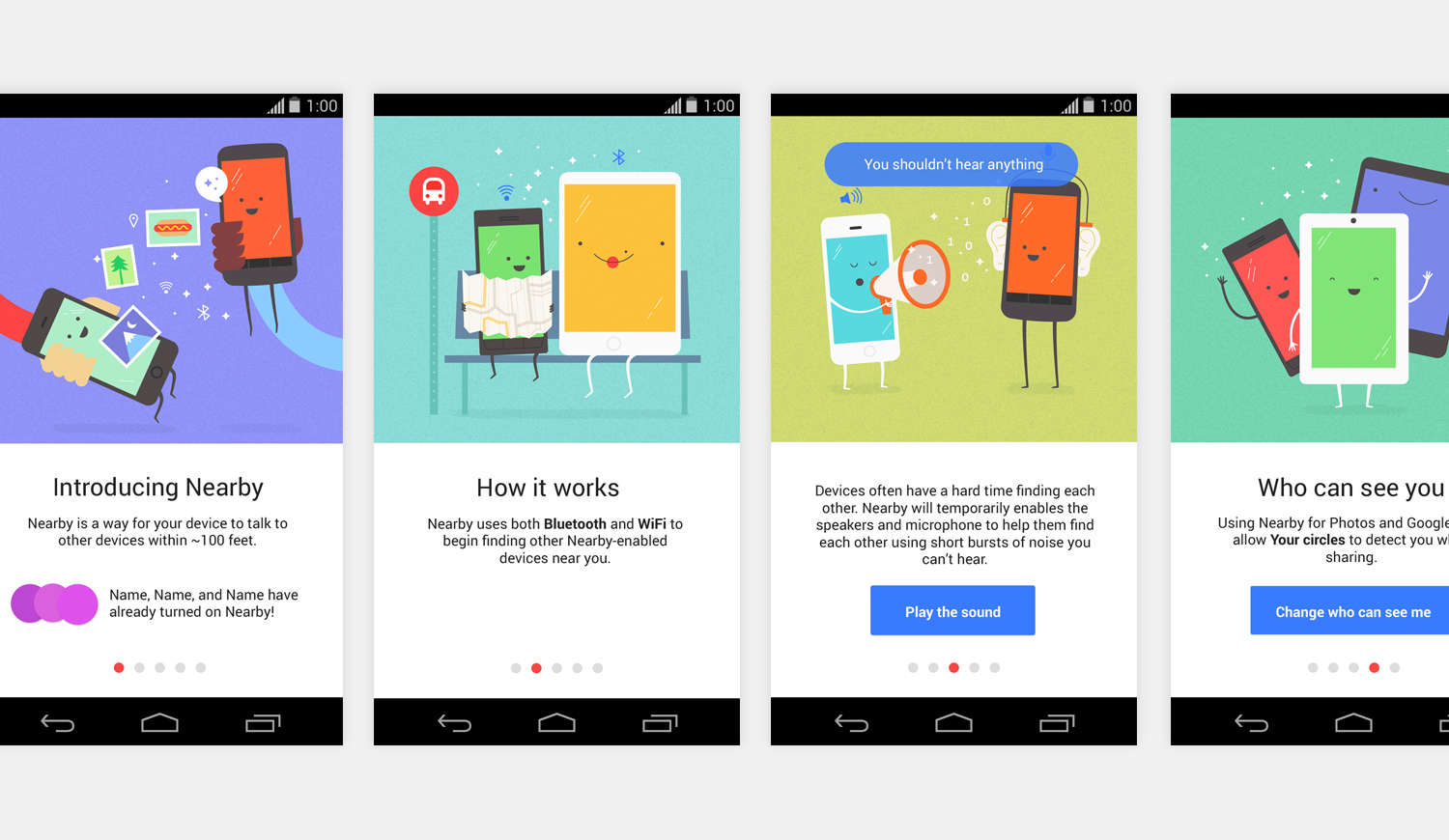In the way Nest allowed your thermostat to connect to your smart phone, the web of things has become a generally accepted technology. When considering how devices actually connect to one another, the privacy implications are the achilles heel, especially when thinking at a Google-scale. Google had created a new technology, called "Nearby", that allowed mobile devices to detect one another within a 30 foot radius. All of our early user-testing indicated that the real challenge was user comprehension, and trust, that their privacy was in no way affected by this.
All of the illustrations shown were created by Fuzzco. I was the lead UX designer, UI designer, and art director for the work below. You can read more about Google's Nearby feature: here, and discover how it's being used for Chromecast: here.
